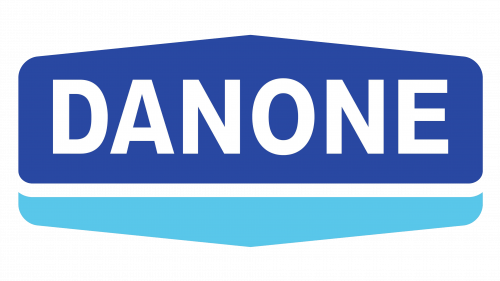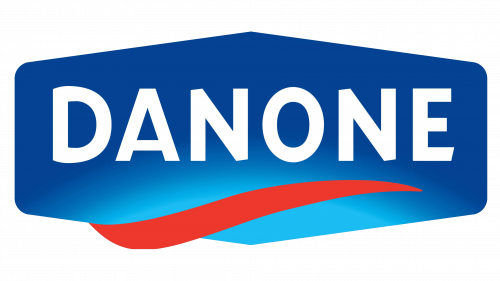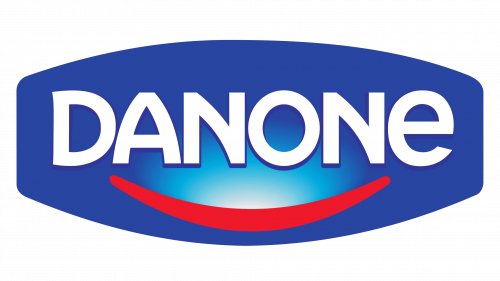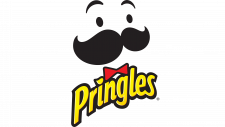Danone Logo
Danone is one of the largest and most successful dairy and other food companies in the world. For many, this company is directly associated with health, care for customers, innovation, and the highest standards of quality control. Danone has a tradition where children aged 10 to 12 participate in the world’s biggest football tournament to win the Danone Nations Cup.
Meaning and History
Danone was founded in 1919 by Isaac Carasso, a pharmacist from Barcelona. The company was named in honor of his son Daniel (the English word “one” was added to the first three letters of the name because the law forbade the use of names in Spain). The history of the company began with the desire of Isaac Carasso to help children suffering from dysbacteriosis and intestinal infections. Initially, the product was sold only in pharmacies. Soon, the yogurt could be found in dairies and pastry shops. The popularity of a healthy product in Europe grew rapidly, and in 1929 yogurts began to conquer the world market. In 1953, the company developed yogurt with fruit flavors.
What is Danone?
Danone is present on five continents and specializes in the production of fresh fermented milk products, baby food, water, and clinical nutrition.
1919 – 1968
The very first Danone logo was created in 1919 and stayed active till the end of the 1960s, which makes it the most long-lasting badge in the company’s history. It was a red-on-white composition, with the stylized massive lettering as the central element. The extra-bold geometric inscription has two small interesting details: the triangular bar of the “A” and the circular one in the middle of the “E”.
1968 – 1980
In 1968 the Danone logo was redrawn in a new color palette, blue and white, which will later become the key element of the brand’s visual identity. The uppercase blue lettering on a plain white background was executed in a stylized sans-serif typeface, with an interesting shape of the “O”, a triangle with rounded corners. Looking pretty much like an egg.
1970 – 1995
The first logo was an oval emblem with the company’s name written underneath. The oval shape was a light purple color and had three white stripes underneath. In the upper half, it had the name of the company done in all capital white letters. Under the emblem, the logo had the name done in the light purple used for the oval shape. The letters were printed using exactly the same font, only larger. Overall, it was simple and there was no doubt as to who the logo belonged.
1971 – 1994
The new logo had a rectangular shape with top and bottom sides being slightly stretched out to form a triangle. The corners were rounded. In the bottom half of the shape, there was a white line that curved upwards on both ends. It divided the emblem, which was darker blue on top and sky blue on the bottom. In the upper half, the company places its name in all uppercase white letters. The font looked very similar to what it had originally, only it was stretched out vertically. Although the colors were changed, the logo was still very recognizable thanks to the white wordmark.
1992 – 2004
The company gave the logo an update and removed the white stripe. It colored the shape using a gradient of dark blue at the top and sides and lighter blue at the bottom. The wordmark looked very similar, although every letter was slightly different. The first letter, for instance, looked more rounded, while the “N” had tops where the lines connected cut at an angle. The letter “E” also had all three lines of different lengths and the bottom one was cut diagonally. A red curved line that seemed to be coming from behind the shape underlined the word.
2004 – Today
The rectangular shape behind the wordmark was redrawn again, so the top and the bottom resembled an arch rather than a rectangle. The corners were still kept rounded, but the lighter gradient at the bottom was moved up almost to the center. The red swoosh line under the wordmark now looked like a smile and was positioned centered right under the name. the font was also changed, and the letters “A” had arched vertical lines, while both “N”s had arched diagonal lines. The “E” was done as a lowercase letter, although it was the same size as the rest of the letters. In addition, there was a very thin shadow or border around the letters that made them stand out.
2013 – 2020
The logo was completely redesigned in 2017. There were no more shapes in the background. The company simply took the wordmark from the previous version and colored it in dark blue that had a lighter gradient in the center towards the bottom. It also kept the red smile, which looked thinner and was not as long. It made the logo a more complete and at the same time interesting look.
2020 – Today
The redesign of 2020 was all about minimizing and digitalization. The new Danone logo features a simplified, modern design that retains key elements of the brand’s identity while embracing a minimalist aesthetic. The gradient wordmark was replaced by a finer and more solid one, having more air in and between the letters, while the iconic red underline in the shape of a smile was stretched and emboldened, gaining a more intense and vivid shade of red.
Font and color
The lettering from the primary logo of the Danone brand is executed in the uppercase of a custom sans-serif typeface, with arched vertical bars and interesting geometry of the “N”s. The closest font to the one, used in this insignia, is, probably, Noveau Poster JNL, but with significant modifications of the characters’ contours.
As for the color palette of the Danone visual identity, it is based on two shades: blue and red, which together create a timeless and strong image, and separately signify reliability and quality (blue), and passion and strength (red).



















